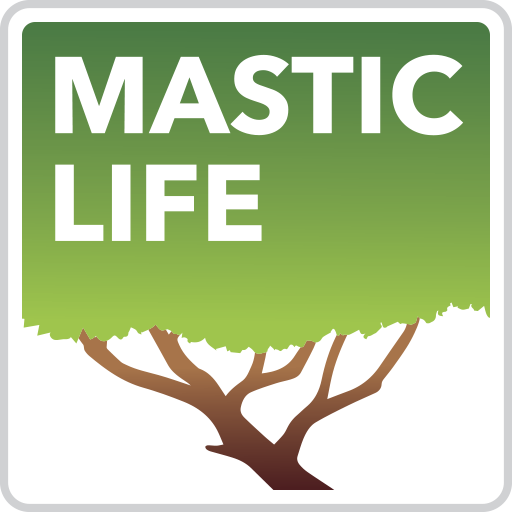Studies: ANTIOXIDANT & ANTI-INFLAMMATORY ACTIVITY OF CHIOS MASTIC
Chios Mastic has a long history as a natural antioxidant, even used in Egypt in the 1970s to preserve fats and oils. In recent years, researchers have confirmed its antioxidant and anti-inflammatory effects in both lab and human studies.
Scientific studies show that Chios Mastic helps inhibit LDL oxidation, lowers cholesterol, protects the liver and cardiovascular system, and reduces inflammation in various body systems. These properties make it promising for supporting health and preventing chronic diseases.
Summary of Key Studies
- 2002: Chewing raw Chios Mastic significantly improved saliva’s antioxidant effect on LDL oxidation.
- 2003: Chios Mastic was the most effective among resins tested for preventing LDL oxidation.
- 2004: Chios Mastic protected vascular cells from oxidized LDL and reduced markers of atherosclerosis.
- 2005: Mastic showed strong antioxidant activity in oils like lard and olive oil, especially when mixed with citric acid.
- 2009: In immune cells, mastic reduced nitric oxide and prostaglandins, and had antioxidant effects.
- 2010: Animal studies showed reduced inflammation and safe use of high doses of mastic.
- 2011: In mice with asthma, mastic decreased airway inflammation and immune responses.
- 2011: Mastic indirecty blocked enzymes that produce reactive oxygen species.
- 2012: Essential oil of mastic reduced brain inflammation and oxidative damage in rats.
- 2014: Encapsulated mastic extract showed improved antioxidant properties in lab tests.
- 2018: Terpenes from mastic appeared in the blood within 30 minutes and reduced oxidized LDL levels.
- 2018: Mastic intake changed blood levels of 24 amino acids, showing possible metabolic effects.
Conclusion
Chios Mastic shows strong natural antioxidant and anti-inflammatory activity, making it a promising supplement for cardiovascular, metabolic, and immune health. Ongoing research continues to explore its full potential.
Note: Chios mastic is a dietary supplement, not a substitute for medical treatment. If you are considering using mastic for oral health or any other purpose, always consult your physician or dental professional beforehand.
- Abdel-Ghaffar A.S., El Nawawy A.S., Mohamed M.S. [1957]: The inhibitory effect of mastic gum on bacterial growth. Alex. Med. J., 3: 119-124.
- Andrikopoulos N.K., Kaliora A.C., Assimopoulou A.N., Papapeorgiou V.P. [2002]: Biological activity of saliva against in vitro LDL oxidation after chewing commercial chewing gums. Ital. J. Food Sci., 14 (3): 279-288.
- Andrikopoulos N.K., Kaliora A.C., Assimopoulou A.N., Papapeorgiou V.P. [2003]: Biological activity of some naturally occurring resins, gums and pigments against in vitro LDL oxidation. Phytother. Res., 17: 501–507.
- Dedoussis G.V.Z., Kaliora A.C., Psarras S., Chiou A., Mylona A., Papadopoulos N.G., Andrikopoulos N.K. [2004]: Antiatherogenic effect of Pistacia lentiscus via GSH restoration and downregulation of CD36 mRNA expression. Atherosclerosis, 174: 293–303.
- Assimopoulou A.N., Zlatanos S.N., Papageorgiou V.P. [2005]: Antioxidant activity of natural resins and bioactive triterpenes in oil substrates. Food Chemistry, 92: 721–727.
- Inducible NO synthase (iNOS) and cyclooxygenase (COX)-2.
- Zhou L., Satoh K., Takahashi K., Watanabe S., Nakamura W., Maki J., Hatano H., Takekawa F., Shimada C., Sakagami H. [2009]: Re-evaluation of anti-inflammatory activity of mastic using activated macrophages. In vivo, 23: 583-590.
- Mahmoudi M., Ebrahimzadeh M.A., Nabavi S.F., Hafezi S., Nabavi S.M., Eslami S. [2010]: Antiinflammatory and antioxidant activities of gum mastic. Eur. Rev. for Med. and Pharm. Sci., 14: 765-769.
- Qiao J., Li A., Jin X., Wang J. [2011]: Mastic alleviates allergic inflammation in asthmatic model mice by inhibiting recruitment of eosinophils. Am. J. Respir. Cell Mol. Biol., 45: 95–100.
- Triantafyllou A., Bikineyeva A., Dikalova A., Nazarewicz R., Lerakis S., Dikalov S. [2011]: Anti-inflammatory activity of Chios mastic gum is associated with inhibition of TNF-alpha induced oxidative stress. Nutrition J., 10: 64-72.
- Quartu M., Serra M.P., Boi M., Pillolla G., Melis T., Poddighe L., Del Fiacco M., Falconieri D., Carta G., Murru E., Cordeddu L., Piras A., Collu M., Banni S. [2012]: Effect of acute administration of Pistacia lentiscus L. essential oil on rat cerebral cortex following transient bilateral common carotid artery occlusion. Lipids Health Dis., 11(8).
- Gortzi O., Athanasiadis V., Lalas S., Chinou I., Tsaknis J. [2014]: Study of antioxidant and antimicrobial activity of chios mastic gum fractions (neutral, acidic) before and after encapsulation in liposomes. J. Food Process. Technol., 5 (8): 355-359.
- Papada E, Gioxari A, Brieudes V, Amerikanou C, Halabalaki M, Skaltsounis AL, Smyrnioudis I, Kaliora AC. Bioavailability of Terpenes and Postprandial Effect on Human Antioxidant Potential. An Open-Label Study in Healthy Subjects. Mol Nutr Food Res. 2018; 62(3). doi: 10.1002/mnfr.201700751.
- Papada E, Torović L, Amerikanou C, Kalogeropoulos N, Smyrnioudis I, Kaliora AC. Modulation of Free Amino Acid Profile in Healthy Humans Administered with Mastic Terpenes. An Open-Label Trial. Nutrients. 2018 Jun 3;10(6). pii: E715. doi: 10.3390/nu10060715.
Mastic for your gastrointestinal tract
-
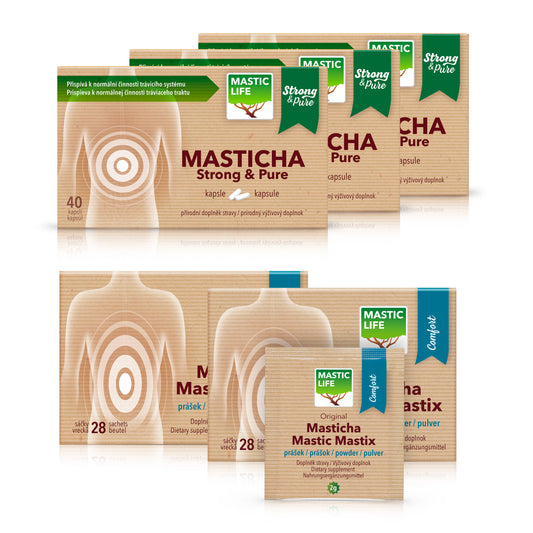 8-week treatment 🗓️
8-week treatment 🗓️Mastic 8 weeks
Regular price 339,00 zł PLNRegular price423,00 zł PLNSale price 339,00 zł PLNSale -
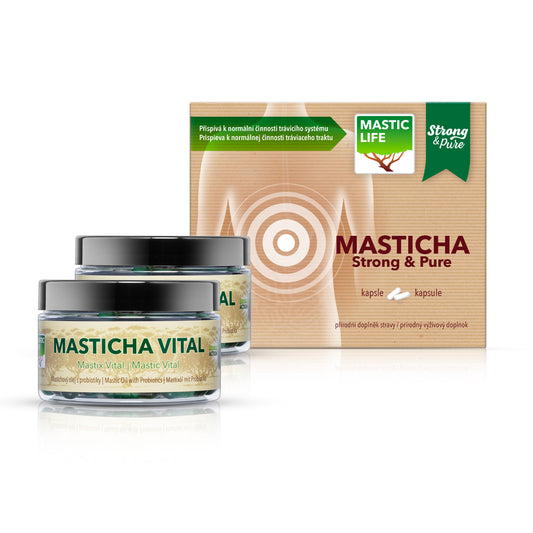 60-day treatment 💪
60-day treatment 💪Mastic Gum Extra for 60 days
Regular price 603,00 zł PLNRegular price758,00 zł PLNSale price 603,00 zł PLNSale -
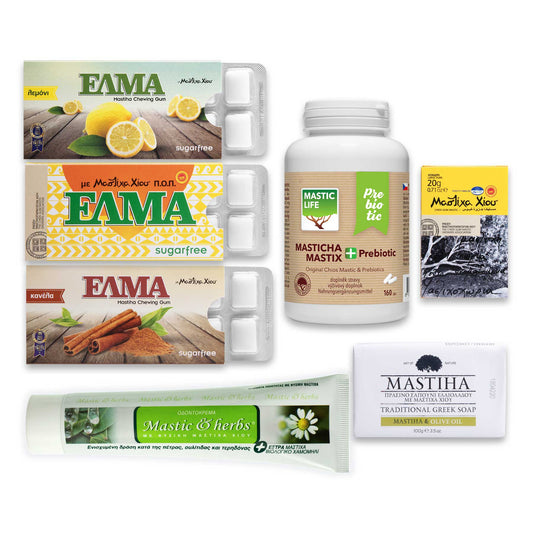 Gift set 🎁
Gift set 🎁Mastic „Life with Mastic"
Regular price 252,00 zł PLNRegular price276,00 zł PLNSale price 252,00 zł PLNSale -
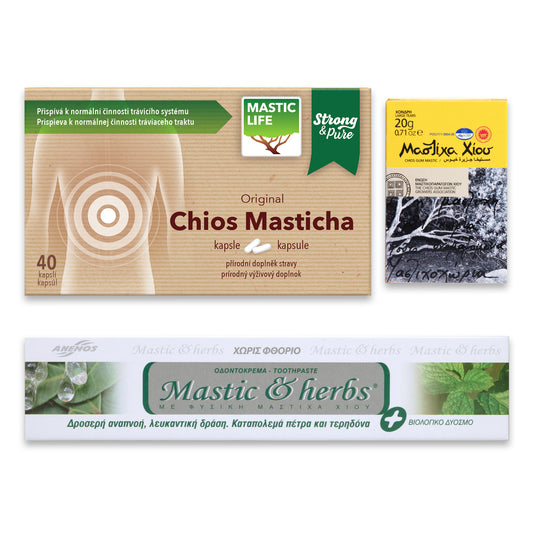 Gift set 🌿
Gift set 🌿Mastic „Pure Mastic“
Regular price 130,00 zł PLNRegular price142,00 zł PLNSale price 130,00 zł PLNSale
